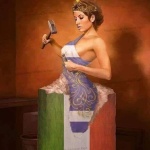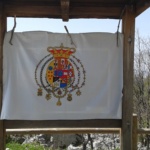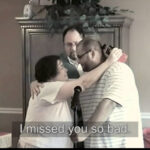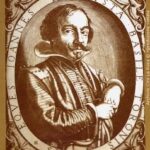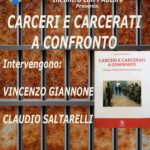Tracce di Esoterismo in “Side Degrees” o “Appendant Orders” della UGLE (3a parte)
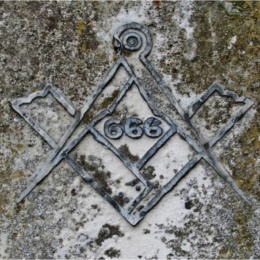
5. “Operatives”
“The Worshipful Society of Free Masons, Rough Masons, Wallers, Slaters, Paviors, Plaisteres and Bricklayers”, chiamati più semplicemente “Operatives”, è una società massonica riservata a Maestri Massoni UGLE che sono anche «Royal Arch Masons» del «Supreme Grand Chapter of England» (UGLE) e «Mark Master Masons» della «Grand Lodge of Mark Master Masons of England» (GLMMM – UGLE).
Il loro scopo dichiarato è perpetuare e preservare la memoria delle pratiche dei Massoni Operativi («the practices of operative Free Masons») che esistevano prima della nascita della Massoneria Speculativa (1717), e che hanno continuato a sussistere indipendentemente da questa (cf. The Worshipful Society of Free Masons, Rough Masons, Wallers, Slaters, Paviors, Plaisteres and Bricklayers, “An Introduction to the Society by. D.R. Stuckey VII°”, Printed by authority of the Grand Master Masons, 1989, s.l., p. 2).
Gli “Operatives” hanno 7 gradi:
I° “Indentured Apprentice”;
II° “Fellow of the Craft”;
III° “Fitter and Marker”;
IV° “Setter Erector”;
V° “Intendent, Overseer, Super Intendent and Warden”;
VI° “Passed Master”;
VII° “Master Mason” di cui tre sono “Grand Master Masons” e tutti e tre insieme dirigono la Società massonica degli “Operatives” (cf. p. 3).
I 3 «Grand Master Masons» sono gli unici membri della Loggia del VII° grado degli “Operatives” (cf. p. 4). Al 1989 un paio di Assemblaggi di Logge “Operatives” si riunivano a “Mark Masons’ Hall” [GLMMM] (cf. p. 4). Secondo la “storia” tradizionale di questa Società, le Logge dei Massoni Operativi non sono mai scomparse del tutto dopo il 1717. È verso il 1871 che hanno avuto un netto declino e solo un paio di Logge sarebbero sopravvissute. Poi nel 1913 c’è stata la “rinascita” degli “Operatives” (cf. p. 5), o forse – a mio avviso – la vera e propria fondazione, dato che in fondo gli “Operatives” del 1913 sono anch’essi “speculativi” poiché accettano solo membri della UGLE o di Grandi Logge riconosciute dalla UGLE.
Tra i membri prominenti degli “Operatives” della prima metà del secolo XX ci sono stati membri rinomati della Massoneria “speculativa” inglese (UGLE), es. Sir John Cockburn e G.E.W. Bridge, Bibliotecario a “Mark Masons’ Hall” (cf. pp. 5-6). Da altre fonti so che Cockburn era 30° grado dell’Ancient and Accepted Rite (o Rose-Croix) e membro della SRIA… Bridge era 33° grado dell’Ancient and Accepted Rite.
È certo che per il 26 settembre 2000, presso “Mark Masons’ Hall” sono state programmate «Grand Assemblage, the General Assembly and Ancient Drama» degli “Operatives” (cf. The Worshipful Society of Free Masons…, Directory and Calendar 1999-2000, s.l., p. 1). Ancora nel periodo 1999-2000 si riunivano a “Mark Masons’ Hall” 2 Logge “Operatives”, l’una fondata nel 1913 e l’altra nel 1943 (cf. pp. 3-4).
L’ «Ancient Drama» è la messinscena rituale della morte di Hiram Abiff, praticata una volta all’anno, a ottobre, dalla Gran Loggia («Grand Assemblage») degli “Operatives”. Dal website degli “Operatives” è possibile vedere l’«Ancient Drama» recitato nel 2020 (qui: https://www.theoperatives.org/antient-drama-2020).
In realtà la Leggenda della morte di Hiram Abiff ucciso da 3 cattivi compagni muratori è una novità della Massoneria Speculativa.
Ecco altri elementi che rivelano il carattere “speculativo” degli “Operatives”. In ogni loro cerimonia il Candidato rappresenta una pietra particolare («in every ceremony of the Society, the Candidate represents a particular stone»: The Worshipful Society of Free Masons…, A Guide to Ceremonies, January 1995, Printed and published privately by authority of the Grand Master Masons, s.l., p. 7).
Al II° e V° grado “Operatives” il candidato rappresenta un pietra testata per misura e perfezione prima di far parte del Tempio Vivente costruito da ogni Loggia… («The candidate represents a stone which is being checked for size and perfection before becoming part of the Living Temple that each Assemblage is endeavouring to build»: p. 8).
Nel 2013, gli “Operatives” pubblicano un opuscolo per il loro Centenario che viene celebrato presso il Gran Tempio della UGLE. Tra i membri prominenti degli “Operatives” nel secolo XX i seguenti massoni (UGLE): John Yarker, Clement Stretton, Sir John Alexander Cockburn, J.S.M. Ward, Arthur Edward Waite (famoso in tutto il mondo per la sua “New Encyclopaedia of Freemasonry”), Bernard H. Springett, Colonel F.M. Rickard, G.E.W. Bridge (cf. The Operatives, Centenary Celebrations 1913:2013, Grand Temple, Freemasons’ Hall, Great Queen Street, London WC2B 5AZ, Saturday 18 May 2013, p. 7).
Ogni anno viene inscenato «The Antient Drama» ossia la morte di Hiram Abiff, impersonato dal 3° Gran Maestro Massone uscente. Il 3° Gran Maestro viene nominato ogni anno e l’anno seguente termina l’ufficio impersonando appunto Hiram che viene simbolicamente ucciso («he is symbolically slain») per non aver voluto rivelare i segreti ai tre cattivi muratori… (cf. p. 9).
Al maggio 2013 il «1st Grand Master Mason» degli “Operatives”, è Nigel Alan Willows: UGLE, Royal Arch, Mark, Royal Ark Mariner, 30° Rose Croix, Allied Masonic Degrees, VIII° 9° SRIA, Knight Templar Priest, Order of Athelstan… (cf. p. 15).
Il 2° Gran Maestro Massone degli “Operatives” nel 2013 è James William Turner, che tra l’altro è 32° Rose Croix, Knight Templar Priest, Allied Masonic Degrees, Order Secret Monitor, Order of Scarlet Cord, IV° SRIA (cf. p. 16).
Il 3° Gran Maestro Massone “Operatives” 2013 è David Michael Edwards, che tra l’altro è 31° Rose Croix, SRIA, Allied Masonic Degrees, Knight Templar Priest, St. Thomas of Acon, Order of Athelstan (cf. p. 17).
Nel libro “The Ritual of the Operative Free Masons” (The Tyler Publishing, Ann Arbor, Mich., USA, 1911, versione pdf, pagine non numerate, cito numerazione pagine file) il massone Thomas Carr (membro onorario degli “Operatives” inglesi) afferma che tra i Segreti («Secrets») del VII° grado degli “Operatives” ci sono la «Swastika», la Stella Polare e il Nome di Dio «El Shaddai» (cf. Chapter 8, pp. 47-49). La «Swastika» è, per gli “Operatives”, il simbolo della Stella Polare e di Dio «El Shaddai or the Most High, Himself» (p. 59).
Carr pubblica il giuramento del 1° grado di Apprendista degli “Operatives” datato Londra 1686. È chiamato Giuramento di Nimrod («The Oath of Nimrod») in cui il candidato giura alla presenza di Dio («El Shaddai») di non rivelare i segreti dei massoni sotto pena di perdere la propria vita e la sua anima non avrà riposo né notte né giorno («the loss of my life»: Chapter 4, p. 29; «I shall be branded with the Mark of the Traitor and slain according the ancient custom by being throatalled»: p. 30). Carr spiega che sono punizioni arcaiche basate su credenze pagane (cf. p. 30).
Vediamo qualcosa dai Rituali degli “Operatives”.
Al I° grado il candidato fa il giuramento di Nimrod («the Oath of Nimrod») alla presenza di Dio («El Shaddai) e della Loggia (cf. The Worshipful Society of Freemasons…, Ritual 1°, November 1993, Printed and Published Privately for The Grand Master Masons, p. 27). I massoni “Operatives” si considerano pietre viventi che vengono trasformati da Dio in sua abitazione («that we may be built up as living stones, into a spiritual house, meet for Thy abitation»: p. 37). Il motto degli “Operatives”: «God is our guide» (p. 37).
Il candidato giura che osserverà il giuramento massonico(non rivelare i segreti del grado, ecc.) sotto pena di perdere la vita: «The loss of my life, that I shall be branded with the mark of the traitor and slain according to ancient custom by being throttled, that my tongue shall be cut out by the root and that my body shall be buried in the rough sands of the sea, where the tide regularly ebbs and flows twice in twenty-four hours, so that my soul may have no rest by night or by day» (cf. The Worshipful Society of Freemasons…, Ritual I°, November 1993, Printed and Published Privately for The Grand Master Masons, s.l., p. 28, lettera l + Key, lettera l)
Al II° grado, il candidato giura di osservare il giuramento (non rivelare i segreti del grado, rispettare la castità della moglie, sorella e figlia di un fratello massone, ecc.) sotto pena non minore di perdere la vita mediante lo strappo del cuore («under no less penalty than the loss of my life by having my heart torn from my breast and given to the fowls of the air as prey»: cf. The Worshipful Society of Freemasons…, Ritual II° together with History and Charges and Lecture, December 1996, Printed and published privately by authority of the Grand Master Masons, s.l., p. 15, F + Key II°, F).
Al III° grado si ribadisce che in tutti i riti degli “Operatives” il candidato rappresenta una pietra viva («a “living stone”») che viene trasformata dallo stato grezzo allo stato di perfezione («to a state of perfection»). Al III° grado egli rappresenta la pietra giusta, approvata («a perfect ashlar stone», «marked and numbered», «ready for erection on the site of the Holy Temple»: The Worshipful Society of Freemasons…, III° Ritual and Lecture, July 1994, Printed and published privately by authority of the Grand Master Masons, s.l., p. 9).
Viene chiesto a Dio di concedere che tutti i massoni come pietre siano marchiati e approvati per il Tempio celeste («and all of us […] may be marked with Thy emblem of approbation as fitted to form part of Thy heavenly Temple where peace, order and harmony eternally reign. Amen»: p. 12).
Al III° grado il candidato giura, in caso di inadempienza del giuramento, di avere la mano destra tagliata («under no less a penalty than that of Having my r[ight] h[and] s[truck] o[off] that I may no longer be able to give the g»: cf. ivi, p. 15, n° 10 + Key III, n° 10).
Al IV° grado la Loggia rappresenta il Tempio, è Luogo Sacro («Holy Ground», «the site of the Temple»: cf. The Worshipful Society of Freemasons…, IV° Ritual and Lecture, January 1995, Printed and published privately by authority of the Grand Master Masons, s.l., pp. 8-9). Scopo del massone: con l’aiuto di Dio («E.S.» = El Shaddai) diventare pietra perfetta per il tempio immortale («to become a perfect stone in that immortal Temple, eternal in the Heavens» (cf. p. 11). Ogni candidato è eretto come pietra viva («I erect you a Living Stone in our Temple»: p. 17).
Dunque la ritualità massonico-operativa (preghiere a El Shaddai, simboli, strumenti muratori, toccamenti e gesti rituali…) è concepita come strumento capace di perfezionare il massone e renderlo pietra viva… Insomma, anche in questo caso, magia muratoria…
Al V° grado il massone giura di non rivelare mai i segreti del grado sotto pena di avere il corpo diviso in due parti («23 Having my b…y s….d in two»: cf. The Worshipful Society of Freemasons…, V° Ritual, s.d., Printed by authority of the G.M.M.s for distribution only to members of the degree and through a duly constituted Assemblage of the Society, s.l., p. 11 (n° 23) + Key V°, 23).
Non ho trovato elementi interessanti nel rituale del VI° grado. Non conosco quello del VII° grado.
Un altro libretto interessante degli “Operatives” è “The Book of Readings”, un testo che raccoglie letture che sono parti essenziali («essential parts») delle cerimonie dei gradi I°, II°, III°, IV° e VI° degli “Operatives” e possono essere lette solo da un massone del VI° grado (cf. The Worshipful Society of Freemasons…, The Book of Readings, March 2005, Printed and published privately by authority of the Grand Master Masons, s.l., p. 1). Nel libretto c’è anche “The Traditional History” tratta dagli antichi “Old Charges” pre-1717 (di cui ho scritto qui: https://www.corrispondenzaromana.it/tracce-di-esoterismo-gnosi-nella-massoneria-pre-1717/). Anche nel testo “Operatives” la discendenza di Caino fa bella figura: i 4 figli di «LAMECH» (cainita) tra cui «TUBAL-CAIN», hanno fondato tutte le arti nel mondo («And these four children founded the beginning of all the crafts in the world»: The Book of Readings, op.cit., p. 6) e sapendo che Dio voleva fare vendetta del peccato («God would do vengeance for sin»), essi hanno salvato le Scienze («the sciences») dal Diluvio universale, scrivendole su 2 Colonne di pietra («on two pillars of stone»), l’una resistente all’acqua e l’altra al fuoco. Dopo il Diluvio una Colonna fu ritrovata da Ermete il padre della sapienza («HERMES (Her-mees) the father of wisdom»: p. 6) che insegnò agli uomini le 7 scienze («the seven sciences»), tra cui la Geometria (cf. pp. 6-7). Poi il testo elogia di fatto la Torre di Babilonia («the Tower of Babylon») o Babele, costruita dai Massoni, e «Nimrod» re di Babilonia, Maestro Massone e promotore della Massoneria (cf. p. 7).
Dunque quel testo degli “Operatives” presenta un riferimento a Ermete Trismegisto, e implicitamente alle “scienze” di Ermete (Ermetismo).
David Kibble-Rees, già Gran Maestro dell’Ordine di Acon, è morto il 20 settembre 2020 (qui: http://www.thomas-of-acon.org/?pageId=34303239g820fa5303ea0c34a708b6683c3fcc9b2).
Kibble-Rees è stato Maestro Massone UGLE, Royal Arch, Mark Master Mason, ecc. È stato anche VII° grado degli “Operatives” e ha pubblicato un libro sulla storia degli “Operatives” di cui ho consultato la versione pdf.
Clement Stretton (1850-1915), massone della UGLE e degli “Operatives”, studioso presso la “Leicester Lodge of Research”, articolista anche per riviste della Massoneria inglese “mista” (non UGLE), entra in corrispondenza anche con massone donne quali Majorie Cecily Debenham («Grand Master of the Co-Masons», Le Droit Humain) e J.A. Bothwell-Gosse 33°. Quest’ultima riceverà il privilegio di far parte come membro onorario degli “Operatives” (tutti massoni uomini, UGLE!) con il titolo a vita di «Grand Master VII° Guild of Operative Freemasons» (cf. David Kibble-Rees, “A history of The Worshipful Society of Free Masons, Rough Masons, Wallers, Slaters, PAvios, Plaisterers and Bricklayers generally known as The Operatives”, 2nd edition, 2009, versione pdf, pp. 21-22).
Addirittura nel 1931, Bernard Henry Springett (UGLE e “Operatives”), a nome degli “Operatives”, scrive a Miss Bothwell-Gosse 33° chiedendole di rivelare agli “Operatives” dei segreti o chiavi che solo lei possiede e che permettono di poter praticare in pieno i rituali degli alti gradi di Massoneria Operativa (cf. p. 22).
A parte i vari dettagli storici, questo libro di David Kibble-Rees VII° («3rd Grand Master Mason» nel 2004 e «2nd Grand Master Mason» nel 2008: cf. p. 47) è importante perché attribuisce apertamente agli “Operatives” un elemento particolare. Infatti nel capitolo “Frequently Asked Questions”, alla domanda perché gli “Operatives” richiedono sacrifici umani per la costituzione di una loro nuova Assemblea o Loggia («Why do the Operatives call for human sacrifices when constituting a new Assemblage?»: p. 133), Kibble-Rees scrive che secondo Bro. Clement Stretton (VII°) gli antichi massoni Operativi includevano davvero dei sacrifici umani nelle loro cerimonie («the Guild of Operative Free Masons included the making of human sacrifices in their ceremonies»: p. 133) poiché essi credevano che occorresse un sacrificio umano, un uomo doveva essere collocato sotto il centro, per assicurare stabilità all’edificio… Stretton racconta che interpretò, tra gli Operativi, il ruolo di vittima simbolica e mentre stava sotto la pietra sentiva dire ritualmente che la sua morte avrebbe assicurato stabilità all’edificio (cf. pp. 133-134).
E oggi, i sacrifici umani degli “Operatives” sono solo simbolici, come la morte di Hiram Abiff al Terzo Grado di Maestro Massone UGLE? Lo spero. Ma, da quanto scrive Kibble-Rees, resta qualche dubbio… Kibble-Rees non parla di morte simbolica o «figurative death» (come si dice ad esempio nell’Emulation Ritual) bensì di sacrifici umani.
Kibble-Rees VII° prosegue (non traduco, chi sa l’inglese capirà): «Today’s Operatives still include the making of human sacrifices in their Constitution ceremony because, according to Stretton, the Guild which preceded us did so, and the answer is as simple as that» (p. 134).
Kibble-Rees precisa che lungo gli anni, si sono levate alcune voci (pochissime, a quanto pare) contro l’inclusione dei sacrifici umani. Kibble-Rees difende la rievocazione («re-enactement») di quei sacrifici: «For me, however, the re-enactement of the human sacrifices has always given me strong grounds for thought although, in the final analysis, I invariably decide that I am willing to accept its continued inclusion because (a) the whole purpose of this Society is to recollect the ceremonies of the former Guild, (b) in volunteering to be a sacrifice one is, in a way, re-dedicating one’s life to the Society and/or freemasonry, and (c) the very gesture used to ‘despatch’ each victim reminds us of a sign familiar to all freemasons throughout the world» (p. 134).
In una domanda-risposta, il massone «WS» (ovvero Bill Sommers: p. 112), collega la forma esagonale del piedistallo di alcuni Ufficiali di Loggia “Operatives” («DMM», «Deputies J and B») con la Cabala ebraica, i Mondi Cabalisti e le «Divine Sephirot»… (cf. pp. 135-137). A questo proposito «WS» ricorda che gli “Operatives” sono tutti Mark e Royal Arch Masons (cf. p. 137).Kibble-Rees rivela che molti Gran Maestri degli “Allied Masonic Degrees”, vari “SupremeMagi” della SRIA (F.M. Rickard, A.G. Davies, Andrew Stephenson) e molti Gran Maestri Provinciali (UGLE) sono stati “Operatives” (cf. p. 155).
fonte



 invio in corso...
invio in corso...